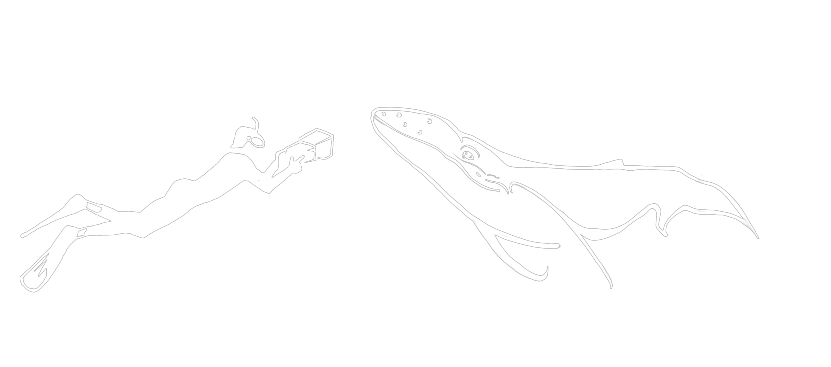Research
“Collecting data is one thing, but it’s another thing to analyze all that data.
Over the years I have shared our fluke IDs with Allied Whale, College of the Atlantic, resulting in several poster presentations at the Society for Marine Mammology biennial conferences.
I also have an ongoing collaboration with University of Edinburgh postgraduate students whose dissertations based on our datasets have been published recently in scientific journals.
Here are three of them:
Bermuda holds a unique position in the North Atlantic for humpback whales as a two-way migratory stopover site between cold-water feeding grounds and tropical Caribbean breeding grounds. WhalesBermuda has teamed up with the University of Edinburgh to provide the first abundance estimates for humpback whales at this key site, spanning a decade of data collection. This work forms part of iAtlantic, an EU-funded project seeking to assess the health of deep-sea and open-ocean ecosystems across the full span of the Atlantic Ocean.
How do you estimate abundance?
Between 2007 and 2022, using a 22-foot single-engine boat, Magical Whale, I searched the waters around Bermuda to observe as many humpback whales as possible. Whales are present around Bermuda between December and May but, due to challenging weather, we average 20-30 days on the water per season. New photographs from each research trip are matched to an existing and ever-growing catalogue of recognizable animals – a process known as photo-identification.
The results
A large number of humpback whales pass through Bermudian waters. Between 2011 and 2020, annual abundance ranged from 786 animals in 2016 to 1434 animals in 2020. Placing these numbers in the context of the entire North Atlantic population is difficult, simply because we don’t have up-to-date abundance estimates for other regions.
Grove T, King R, Stevenson A, Henry L-A Reconstructing abundance trends of humpback whales at an oceanic migratory stopover. Frontiers in Marine Science:
To view the online publication, please click here: Abundance estimates
Fluke IDs and abundance analysis
JASCO Sciences Autonomous Multichannel Acoustic Recorders (AMARs) were deployed on the SW corner of the Bermuda seamount and on the crown of Challenger Bank, 7 and 15 miles offshore. We examined the seasonal, diel, and song patterns of vocalizations of humpback whales migrating through Bermuda. These acoustic results over a 12-month period corroborate visual data and reveal Bermuda’s importance as a stopover migration site for North Atlantic humpback whales.
Narganes Homfeldt T, Risch D, Stevenson A, Henry L-A (2022) Seasonal and diel patterns in singing activity of humpback whales migrating through Bermuda. Frontiers in Marine Science 9: 941793
To view the online publication, please click here: Acoustic analysis
Acoustic song analysis
Location of AMARs
Diel patterns of singing. Singing activity significantly increased at night relative to the daytime, whilst twilight periods were characterised by intermediate levels of singing.
Acoustic presences across the three deployments indicated a clear seasonal trend of humpback whale occurrence off Bermuda in the spring and winter months, ranging from late December to mid-May
The 5417 hours of acoustic recordings were manually scanned for humpback whale sounds and for the minimum number of simultaneous singers encountered, ranging from 0 to 5. Song was the predominant vocalization type encountered, with 65% of song recordings containing whale chorus, i.e. more than one whale singing.
We are undertaking further acoustic analysis, annually updating our abundance database, and embarking on a study of the pelagic social behavior of the North Atlantic humpbacks based on our aerial surveys.
Cetacean Conservation in Bermuda
This paper addresses the outcomes of the first two papers, namely the steady increase in humpback numbers and importance of song during the humpbacks’ northern and southern migratory journey, and the overlap and impact of rapidly growing human activity within the marine environment as a direct physical threat as well as the acoustic masking consequences of increasing noise pollution.
Existing marine conservation measures within Bermuda are concentrated within shallower waters, protecting dive sites and coral habitats. With minimal protection, the threats facing humpbacks are likely to worsen within. A new Draft Marine Spatial Plan, BOPP, has recently been approved by the Bermudan Government that, along with various economic growth strategies, including a Blue Economy, aims to increase the levels of human activity across the Island and the nearshore waters.
This pioneering study examines the need for a new Area-based Management Tool for cetacean conservation in Bermuda and the evidence to support its designation as a Particularly Sensitive Sea Area.
In progress.










